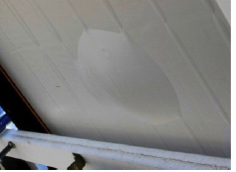Causes and Solutions for Cracking in Solar PV Backsheets
- RenewSys India

- Sep 7, 2022
- 3 min read
Updated: Aug 8, 2025
The backsheet is the outermost layer of a solar panel or PV module. It provides mechanical strength and protection from environmental stresses like heat, moisture, and dust.
Functions of a PV Backsheet
A PV backsheet is a multilayer laminate designed to perform specialized functions.

The primary functions of the innermost or PV cell-facing layer is adhesion with the encapsulant, reflecting sunlight back towards the cells, and acting as a barrier against UV light for the other layers of the backsheet. This UV-blocking property helps prevent prolonged degradation or damage to the underlying components.
The outermost layer or air-side layer of the backsheet is composed of PVDF/PVF or HPET layers. These layers are specifically engineered to endure challenging weather conditions. In the case of PVDF/PVF air-side backsheets, they not only provide flame retardancy to the PV Module but also act as a barrier, preventing the ingress of dust and moisture.
Is the Cracking of PV Backsheets Influenced by Climate?
Numerous cases of backsheet material failures, particularly cracking, have been documented in various regions, including China, India, America, and the Mediterranean area.
The prevalence of these failures suggests that there isn't a clear connection between cracking and specific climatic conditions. Cracking of these backsheets has been observed in diverse weather settings, encompassing hot-arid, hot-humid, cold, and temperate conditions.
When the external layer of the backsheet cracks, it expedites the deterioration of the PV cells within the solar panel while also compromising insulation effectiveness. As a consequence, PV plants experience significant losses due to declining output, coupled with an elevated risk of additional failures.
Deeper cracks in the backsheet may lead to delamination, which refers to the separation of layers that make up a backsheet.
Factors Causing Cracks in the Backsheet:
Backsheet cracking can be attributed to the following factors:
1. Usage of inferior-quality raw materials, which can lead to:
Poor hydrolytic properties - hydrolytic degradation/cracking
UV degradation - UV degradation, yellowing, browning, cracking
Poor moisture barrier affecting the performance of PV solar cells.
2. Poor backsheet design/construction
3. Defective or substandard manufacturing processes and protocols
4. Incompatible thermal expansion coefficients: The backsheet may expand and contract at different rates than the other components of the solar panel, such as the frame or encapsulant, causing stress and cracking.
Why worry even if you have a warranty for your solar panel?
A key function of backsheets is fire retardancy. A compromised backsheet means a higher risk of your home or solar project catching fire.
Most installers source a large number of PV modules from a single supplier. And in turn, module manufacturers acquire large rolls backsheet. This means that a faulty backsheet could affect a large number of modules simultaneously. This translates to the need for replacing a substantial number of modules. During this replacement process and reinstallation period, the affected modules might generate little to no energy output.
How does RenewSys ensure the prevention of cracking and backsheet degradation?
Our supplier selection process involves rigorous testing of provided samples. The downward value stream is also well-controlled to diminish the probability of failures at our customer's plants.
At our PV Backsheet manufacturing plant, we conduct regular quality assessments, along with incoming material testing. Furthermore, extensive accelerated environmental testing is conducted at our PV module manufacturing facilities. These practices ensure that the raw material's quality adheres to specifications and meets performance expectations.
Additionally, to make testing of these crucial raw materials accessible to all, RenewSys has set up a dedicated, independently-run Laboratory that specializes in testing PV Polymer components (Encapsulants & Backsheets) and their raw materials. This lab is the only one of its kind in India and is NABL-certified.
Lastly, for module manufacturers procuring encapsulants and backsheets from RenewSys, we offer an exclusive program called “RenewSys Doctor PV,” which allows them to test their PV modules and incoming raw materials.

Data Credits:
Image Credits:








